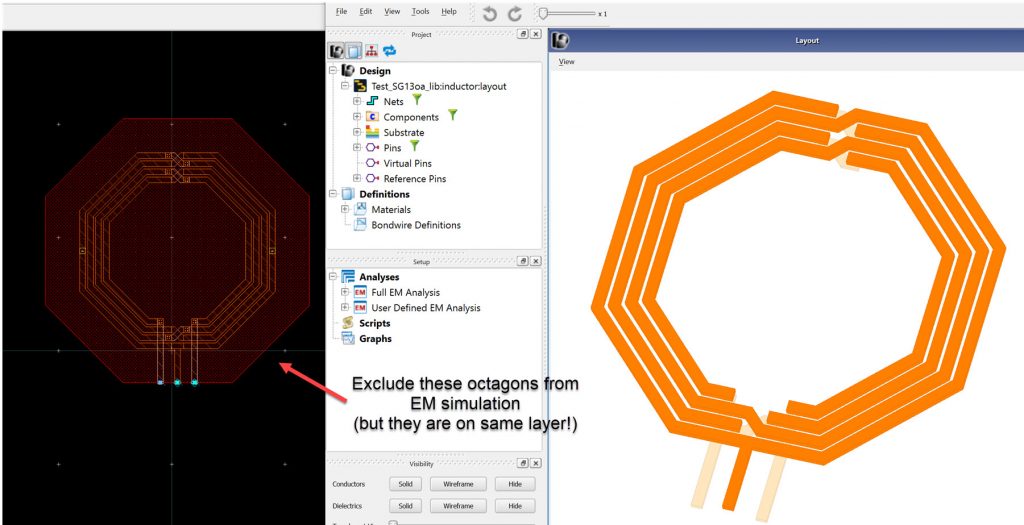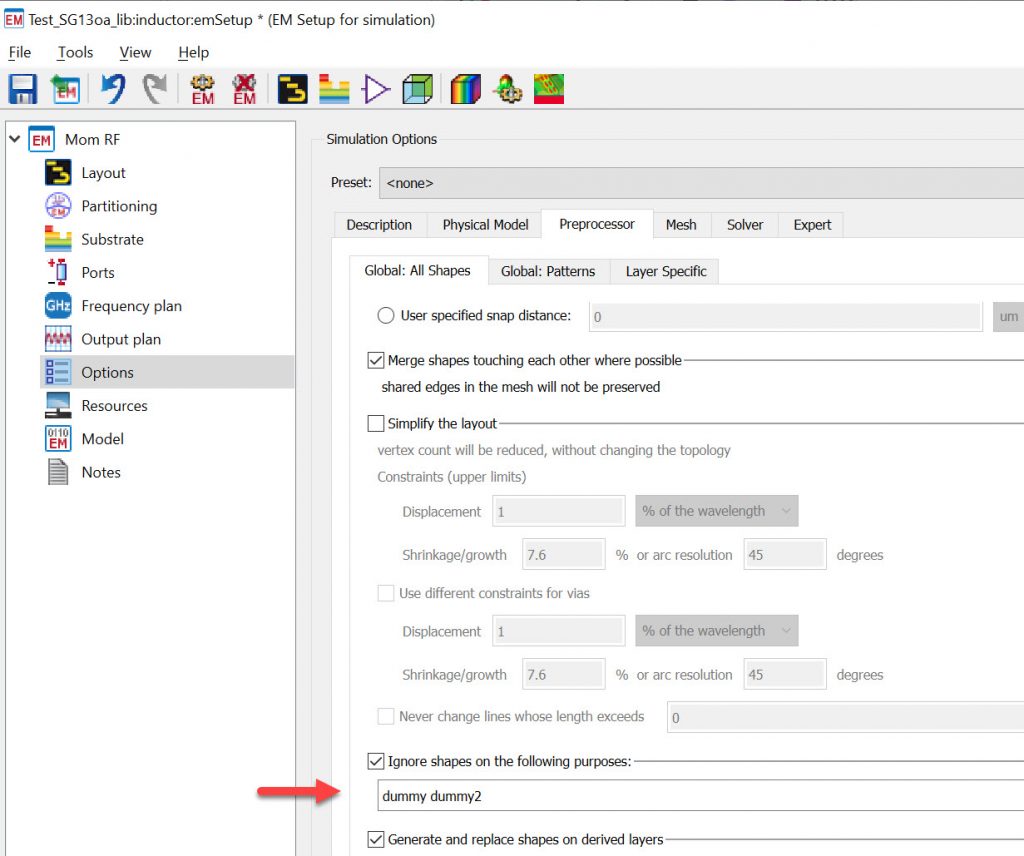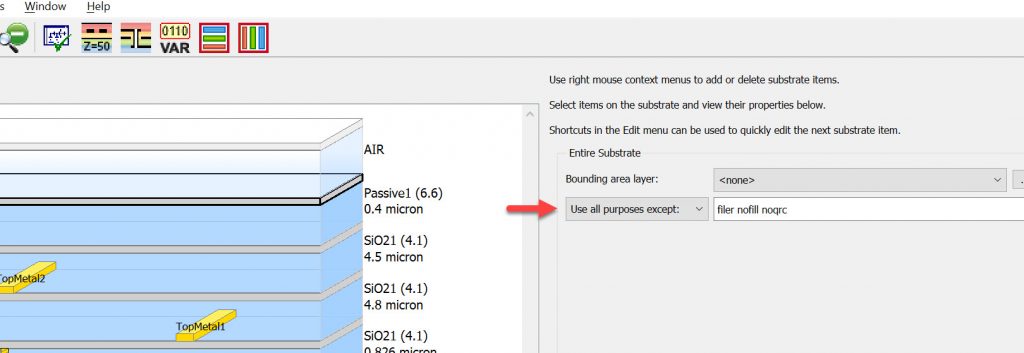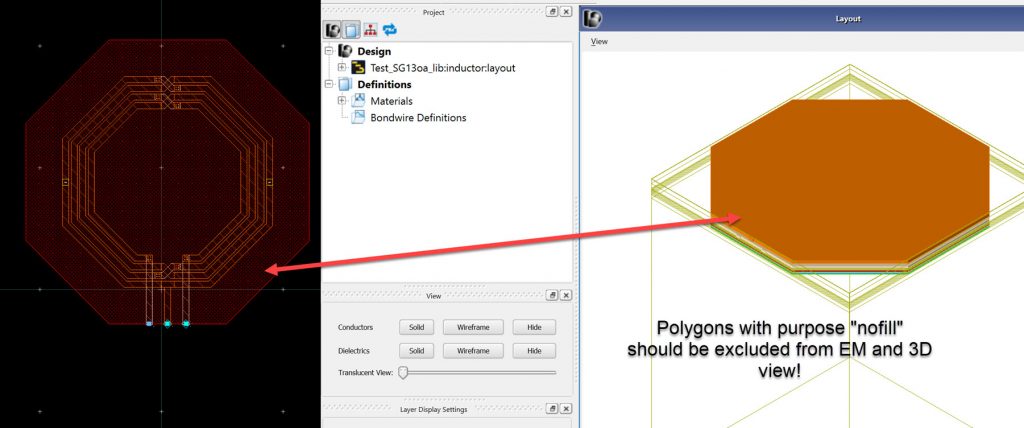NEW: In ADS 2020, purposes can be excluded directly in the EM substrate definition, and will be effective for all EM using that substrate. This is much easier than before, and means that PDKs can be pre-configured to use the correct settings. The PDK user then doesn’t need to set or change anything. This works for Momentum, RFPro and also for the 3D view.
What is “purpose” and why is blocking required?
In RFIC design, each layer can have sub-groups for specific purposes, such as “drawing” or “pin” or “filler”. This sub-grouping is called “purpose” in the ADS user interface, and represents a “data type” in the GDSII file format.
In some RFIC technologies, we have drawing and non-drawing objects on the same layer, with different purpose. ADS layout can easily handle this, but ADS EM substrate (stackup) definitions are based on layer mappings, and don’t care about the purpose. This means we need to “filter” objects before they go to the EM simulation model, because some non-drawing objects (technology control objects) must not be part of EM simulation.
Old solution, ADS 2019 and earlier: exclude in emSetup
In ADS 2019 and earlier, emSetup options could be used to block specific purposes, but this had to be done for each cell individually. Using emSetup templates, this setting could be re-used, but it still required that users know about all these details.
Exclude purpose in ADS 2020 or later
Instead of listing the exclude purpose in each emSetup, ADS 2020 offers a new feature to exclude specific purposes directly in the substrate definition (*.subst, *.ltd).
This is a lot easier because it only needs to be done once for the substrate, and it works for all parts of ADS that use this substrate file: Momentum/FEM, 3D visualization and also RFPro export.
Do I really need this?
That depends on your technology. If all objects on your substrate layers shall be included in EM, there is no issue and you can ignore this topic. However, if your technology uses the same layer for drawing objects and “non-drawing” purposes like dummy fill blocking, you need this feature.
Below is an example: octagons with purpose “nofill” are on the same layer as the inductor, and if we don’t exclude them they go straight into the EM model. We then get a short circuit instead of the spiral inductor.




